In the 1990s, I had visited beautiful Sanibal Island on several occasions. My absolute favorite attraction on the island, is the J. N. "Ding" Darling Wildlife Refuge. It's about an hour from where we are staying and I was anxious for John to visit it, too. (There is a $6 toll to cross the Causeway to the Island. We purchased a SunPass for toll payments in FL at a welcome center when we crossed into the state...from a vending machine with on-line registration of your vehicles.)
We spent some time in the Visitor and Education Center where there are lots of interesting and interactive exhibits about the refuge. The diversity of the wildlife found in the 6,300 acres of the refuge is impressive: 300 bird species (many migrate along the Atlantic flyway); 50+ reptiles and amphibians; and 30+ mammal species.
An art exhibit was underway when we visited with lots of interesting pieces.
This exhibit of decoys, The Evolution of Native American Decoys to Contemporary Decorative Sculptures, were carved and painted by Jim Sprankle. They were amazing.
The primary purpose of this and almost all other National Wildlife Refuges is to provide a safe haven for migratory birds. In 1902, at a single London market, 1,608 packets of heron plumes (gathered from killing 193,000 herons and, therefore, allowing 3 times that number of eggs and chicks to die) were sold. The cost of an ounce of plumes was double the cost of an ounce of gold!
The first National Wildlife Preserve was designated in 1903 by President Theodore Roosevelt to protect plumed birds from extinction. Since then, other species have also recovered from near extinction in our country's refuges including the American alligator, American Bison, brown pelican, and bald eagle. Today, there are 562 National Wildlife Refuges encompassing 150M acres administered by the U.S. Fish and Wildlife Service.
Jay Norwood "Ding" Darling (1876-1962) was an editorial cartoonist whose work appeared in about 150 papers across the country by the 1930s. He became well known as a two-time Pulitzer Prize winner and an ardent conservationist. President Theodore Roosevelt appointed him chief of the U.S. Bureau of Biological Survey (the precursor to the U.S. Fish and Wildlife Service) in 1934. The following year, he and his wife moved to Captiva (north of Sanibel). With Darling's desire to preserve the unspoiled beauty of Sanibel combined with his influence, the Sanibel National Wildlife Refuge was created by President Truman in 1945. Five years after Darling died, the Refuge was renamed the J.N. "Ding" Darling National Wildlife Refuge in recognition of his preservation efforts. The "blue goose" used as the logo of the National Wildlife Refuge systems was created by Darling. A replica of his office is on display at the Visitor Center.
The large rifle in the display is a punt gun. These guns were mounted on skiffs and used by illegal hunters to kill ducks by the thousands. The gun could be loaded with two to three pounds of shot and could exterminate an entire flock in one blast.
The four-mile, paved Wildlife Drive runs along the ridge of a dike that was built through the refuge. It is open to vehicles, bicyclists, and hikers. There is a $5/car fee or $1/person hiking/biking fee. (Our Senior Pass gets us in for free.) Tram Tours (guided tour with ranger) is also available from the Visitor Center ($13/adult or $8/child). Vehicles may park anywhere on the right shoulder along Wildlife Drive.
Our first stop was at an open area where we spotted this Yellow-Crowned Night Heron and numerous American White Pelicans.
Be sure to check out the Mangrove Overlook where there is a short boardwalk through mangrove trees to a view of the bay. Dogs are permitted on the trails and boardwalks here, so our doggy, Sadie, had fun exploring with us. We saw lots of jumping mullet in the water...sometimes they do three successive jumps. I never did catch a photo of one though.
If you look closely at the mangroves, you will see many mangrove tree crabs along the trunks and roots of the trees. Some are very small and some are up to 2.5".
Our next stop was the Cross Dike that separates the east water impoundment from the west and links to the Indigo Trail. We saw several white ibis as well as various ducks.
We also saw these horseshoe crabs in the shallow water along the dike. I have seen many horseshoe crab shells over the years, but this is the only time I have seen one alive! And then, we saw these two engaged in, I am not sure what!
And I captured a picture of this lovely butterfly along the estuary.
We were thrilled to see this alligator (or is it the sole crocodile that lives here?) sunning on the bank beside the road.
I followed the short trail at Colon's Point where I saw more White Ibis, ducks, and mangrove tree crabs.
Our last stop along Wildlife Drive was Wuffert Keys Trail to Pine Island Sound. Sometimes, manatees and dolphins can be seen from here. We saw waterfowl in flight, but I only caught pictures of this juvenile Ibis and and adult White Ibis.
If you are ever in the Ft. Myers area, be sure to visit this place. There is lots of activity during the mating season of birds here in the spring. And, that is when their plumage is the most spectacular. We may return to hike more of the trails here while we are in Bonita Springs.
For additional information about J.N. "Ding" Darling National Wildlife Refuge, check it out online at www.dingdarlingsociety.org.
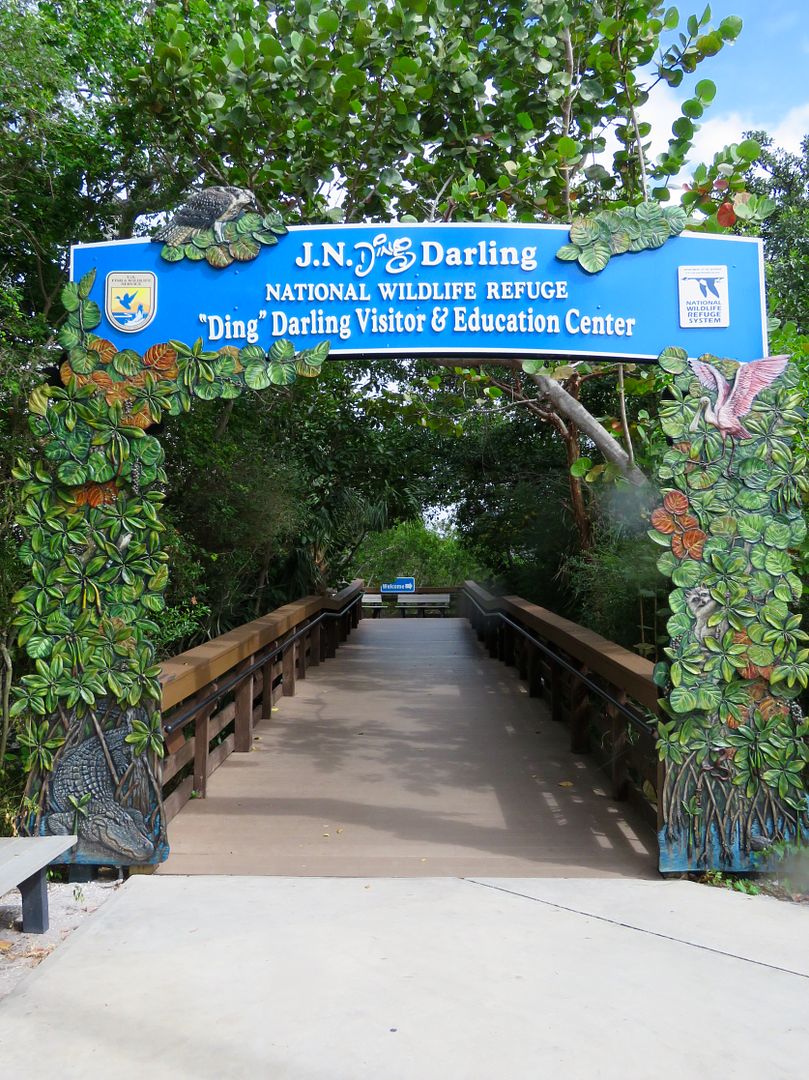
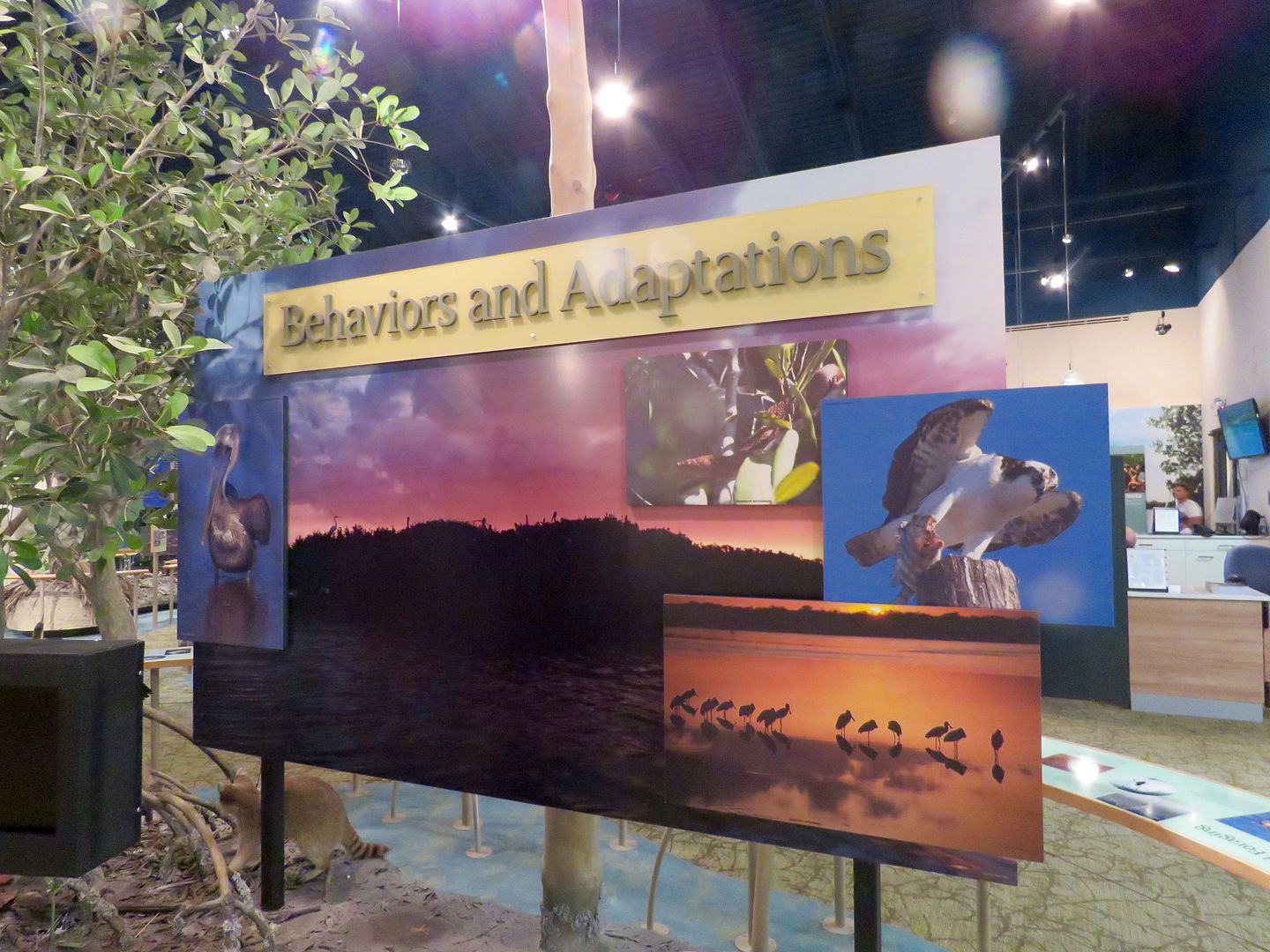
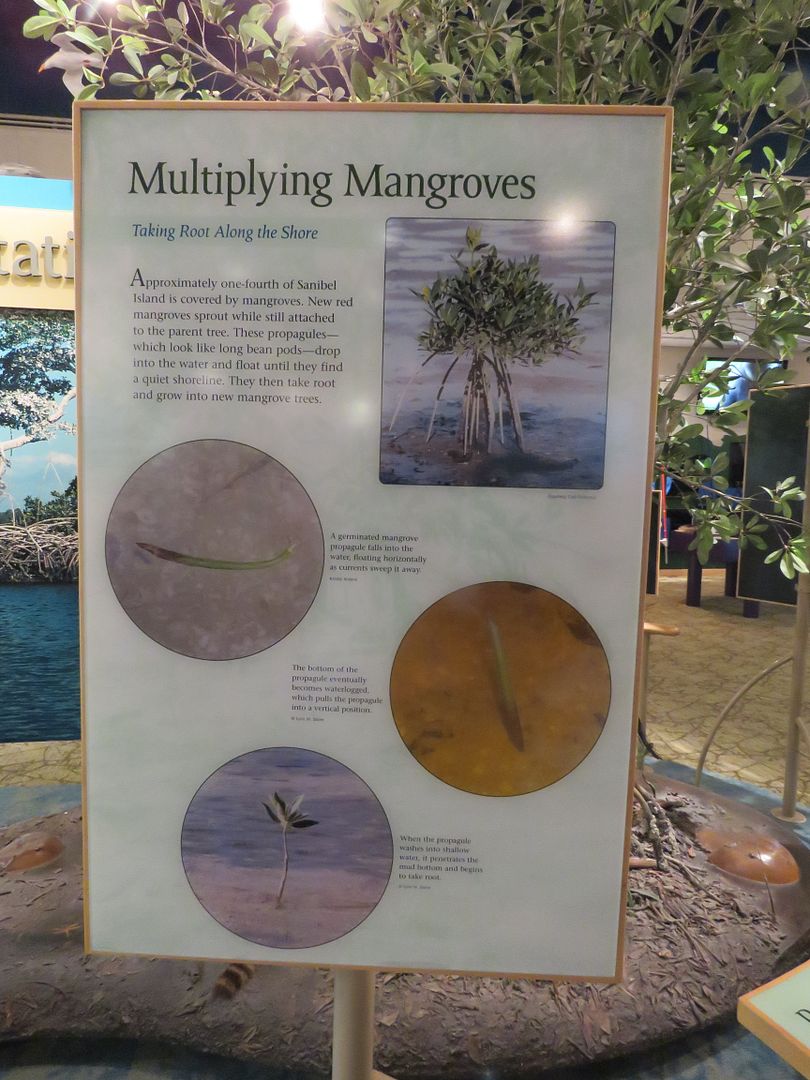
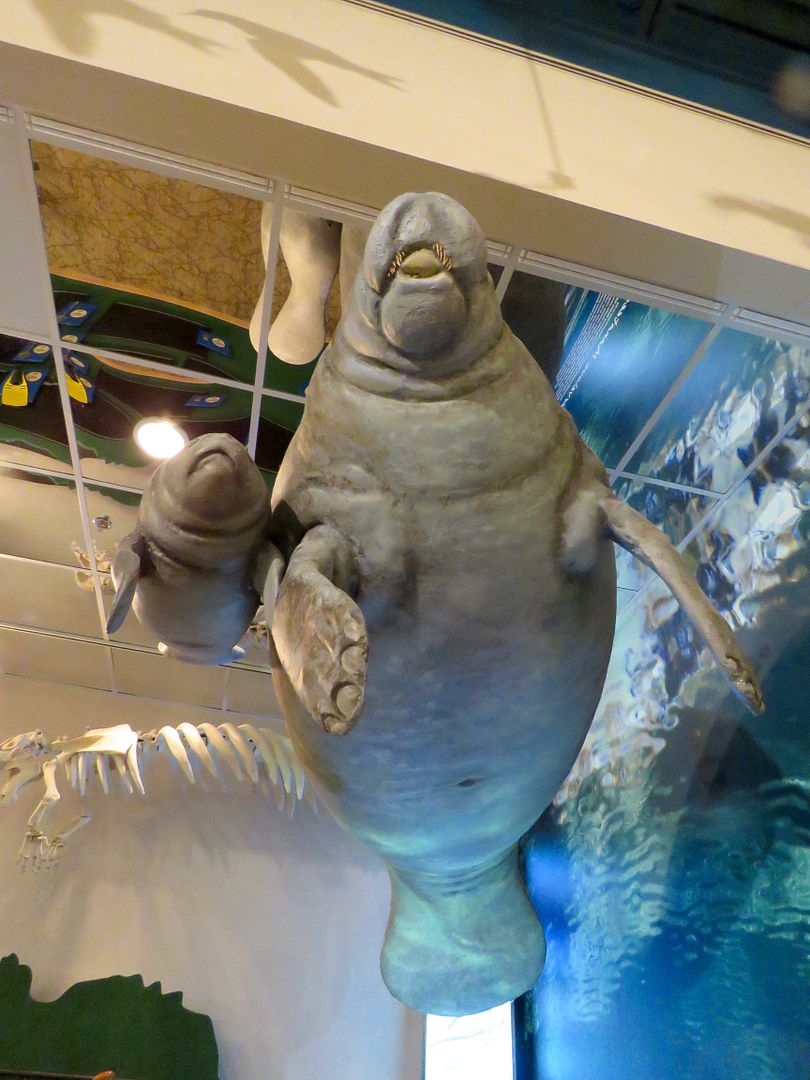
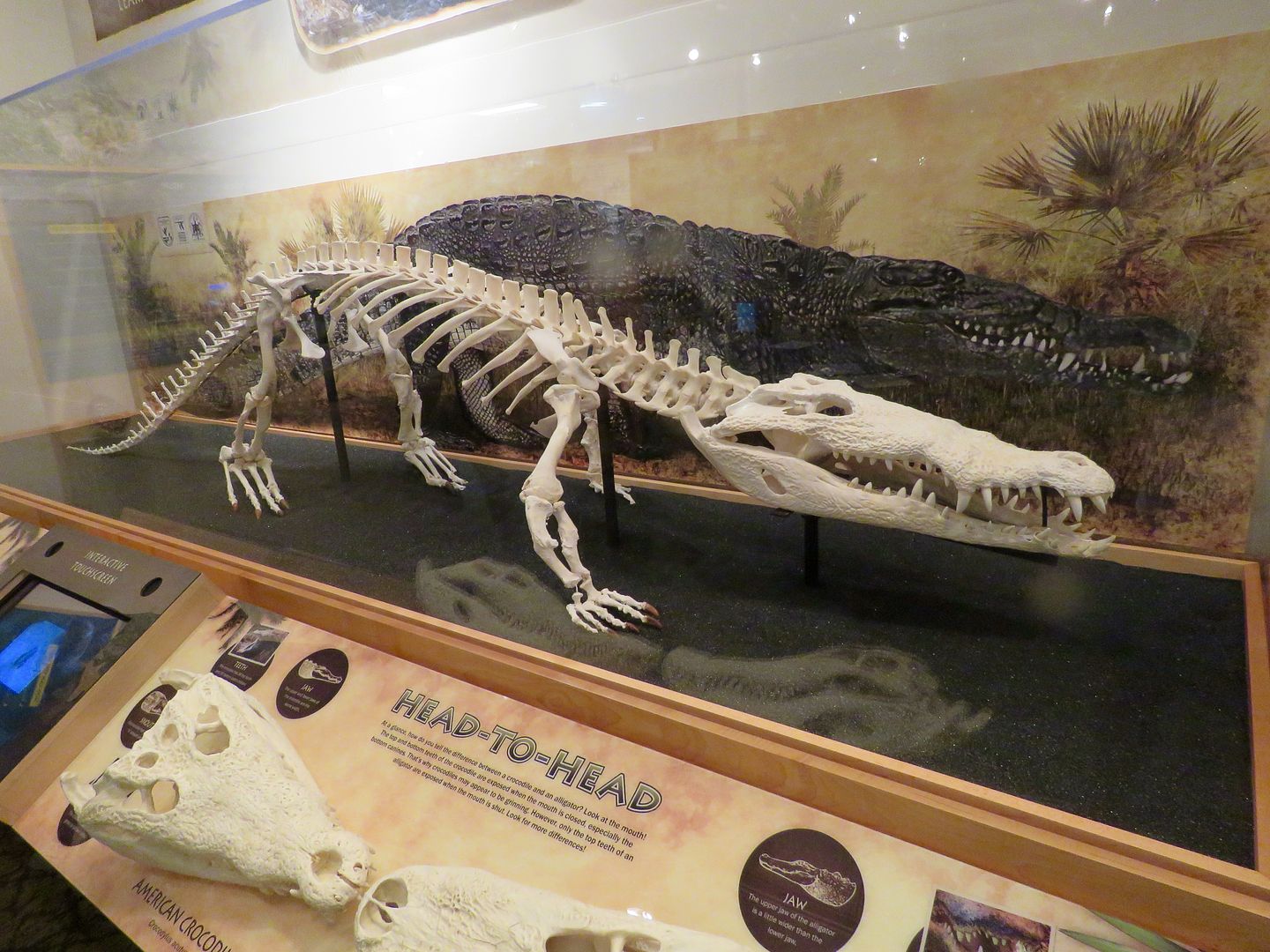


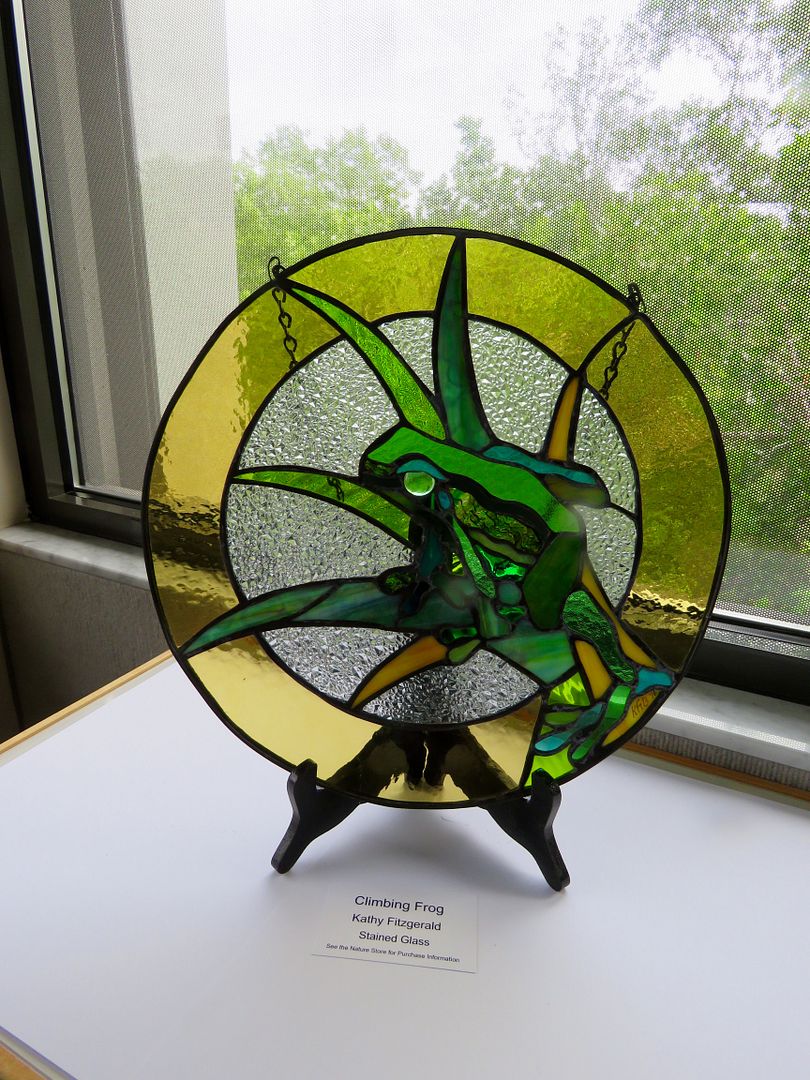
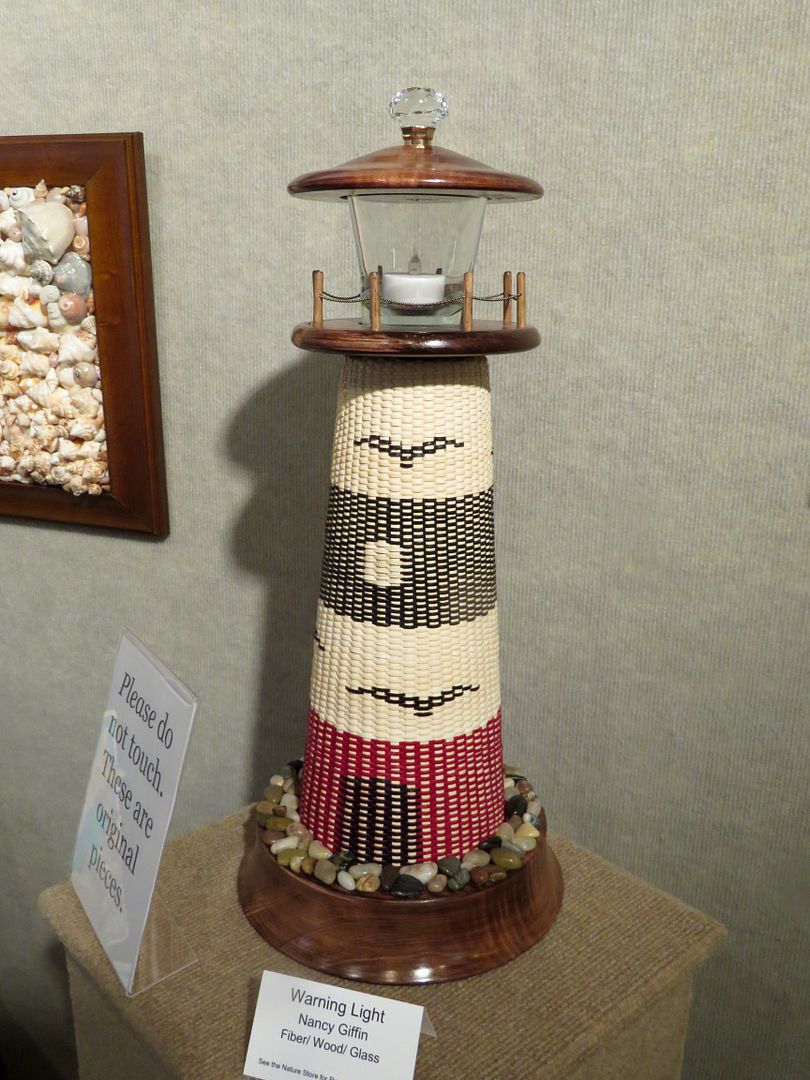
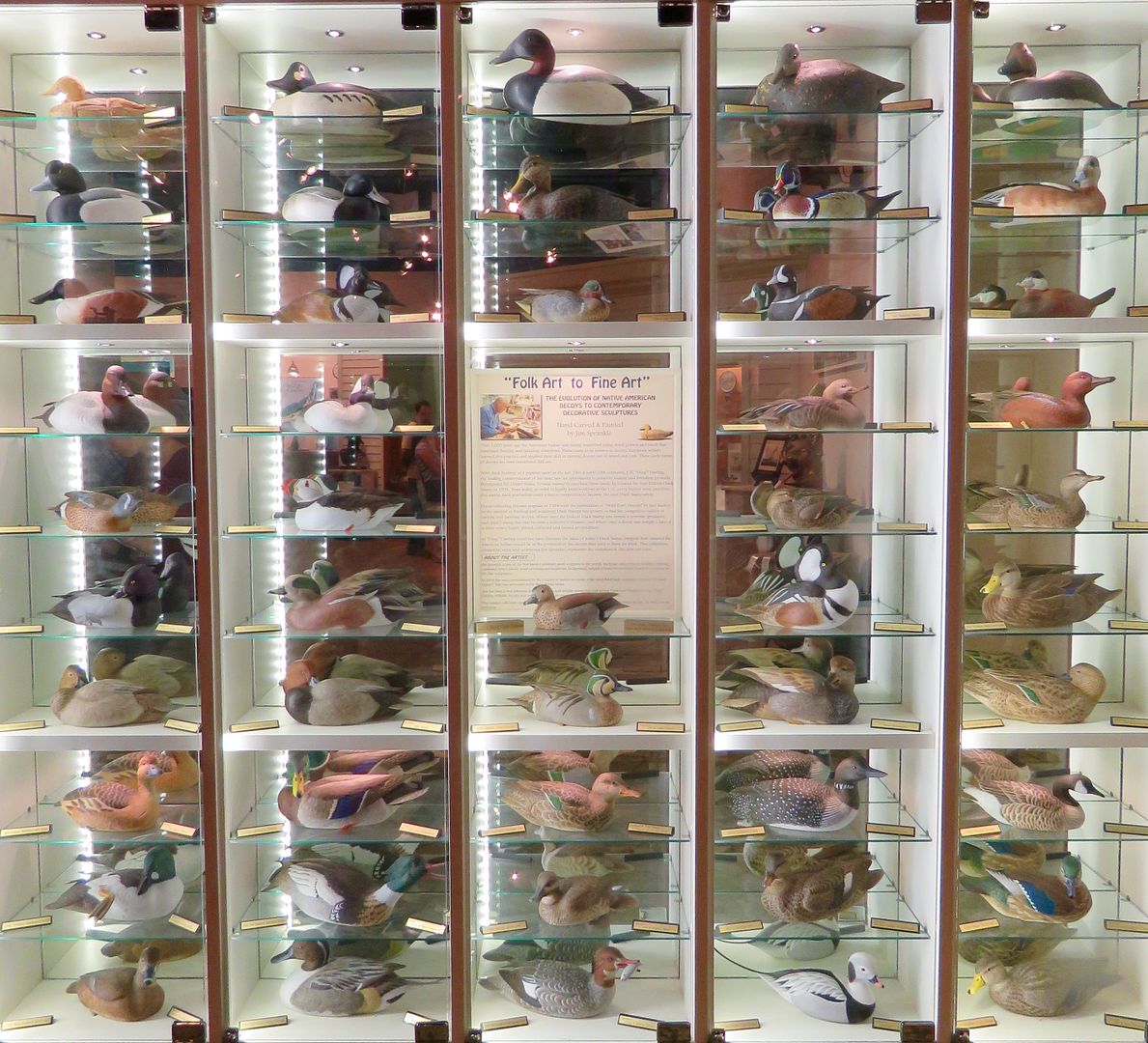
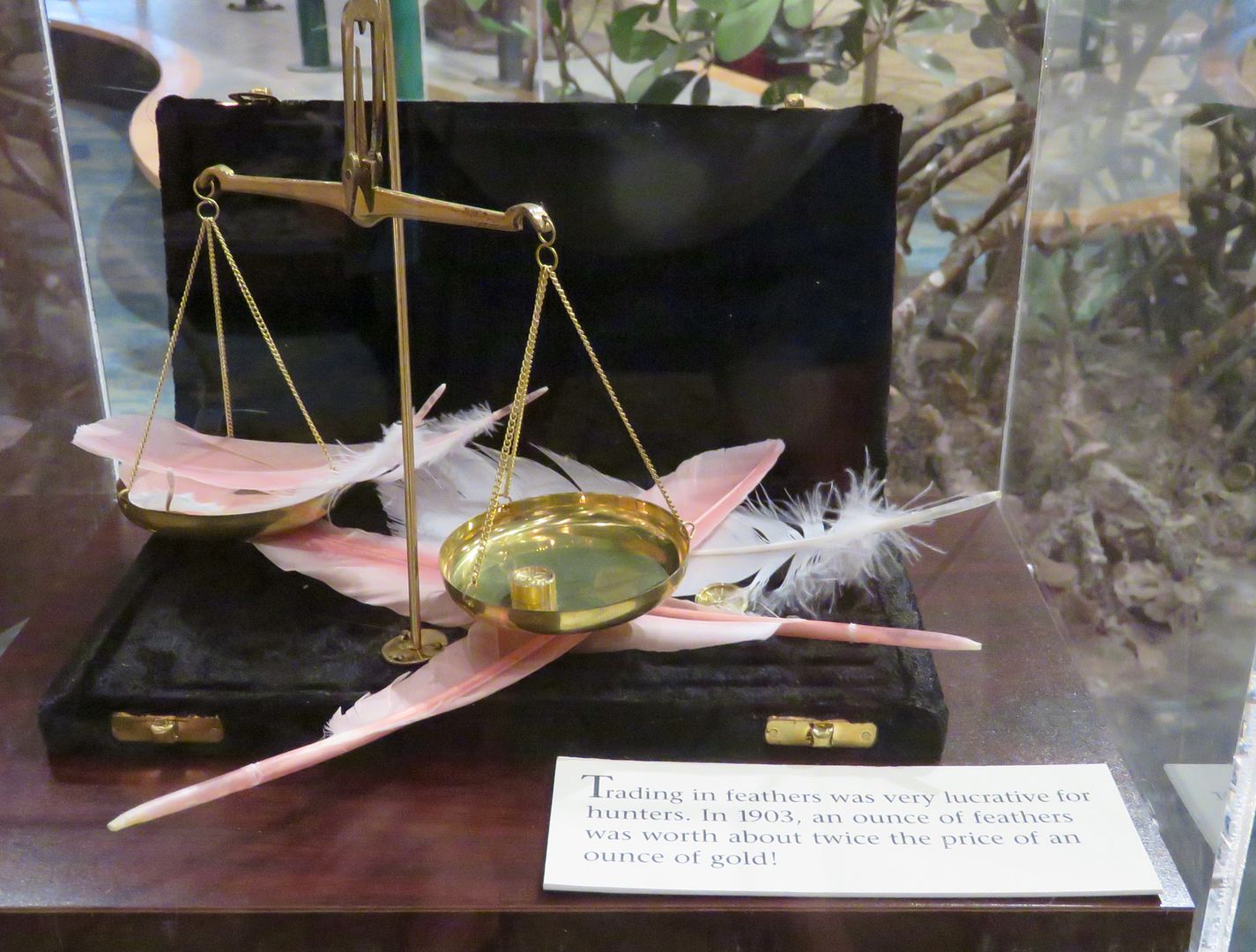
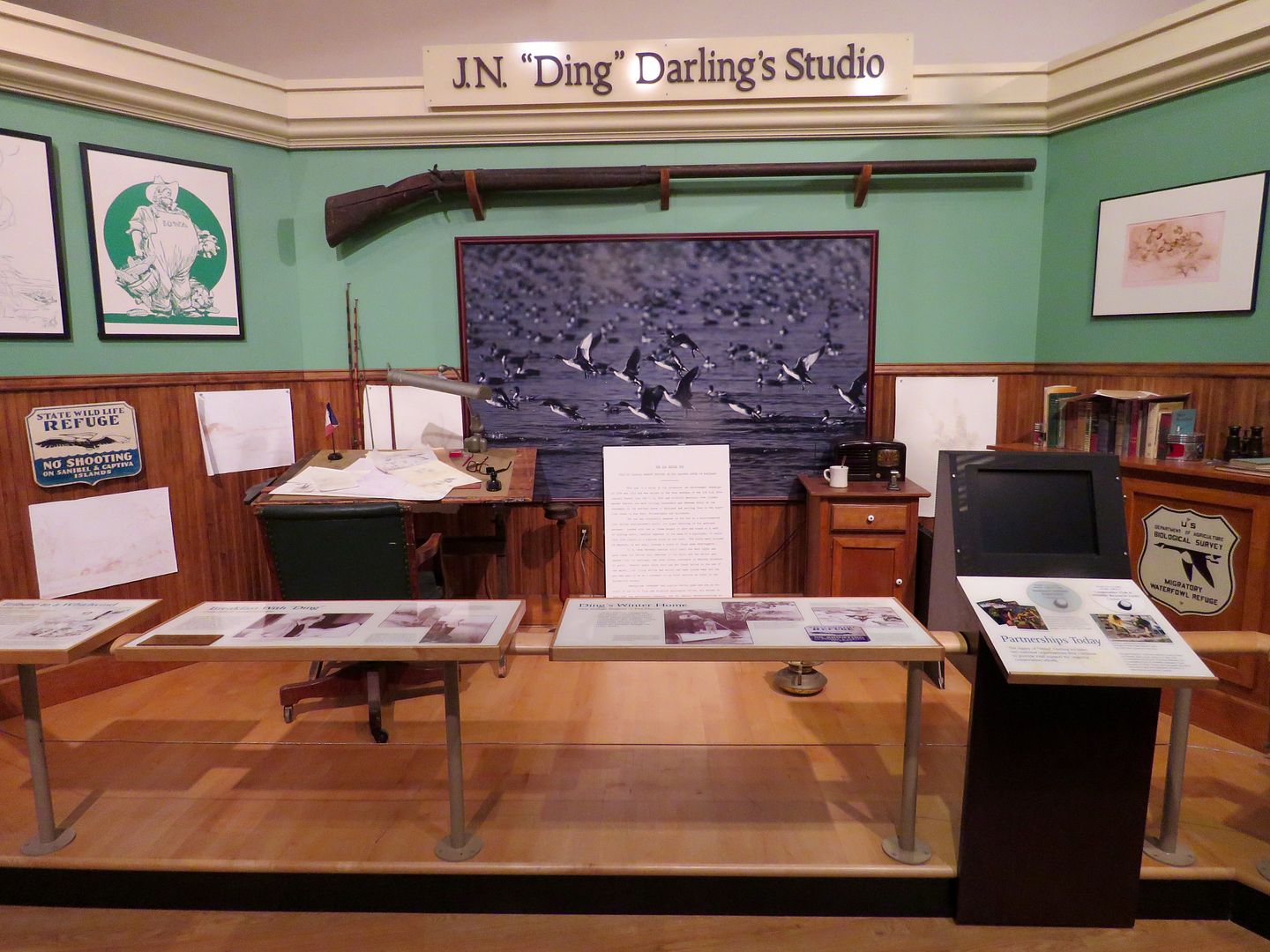
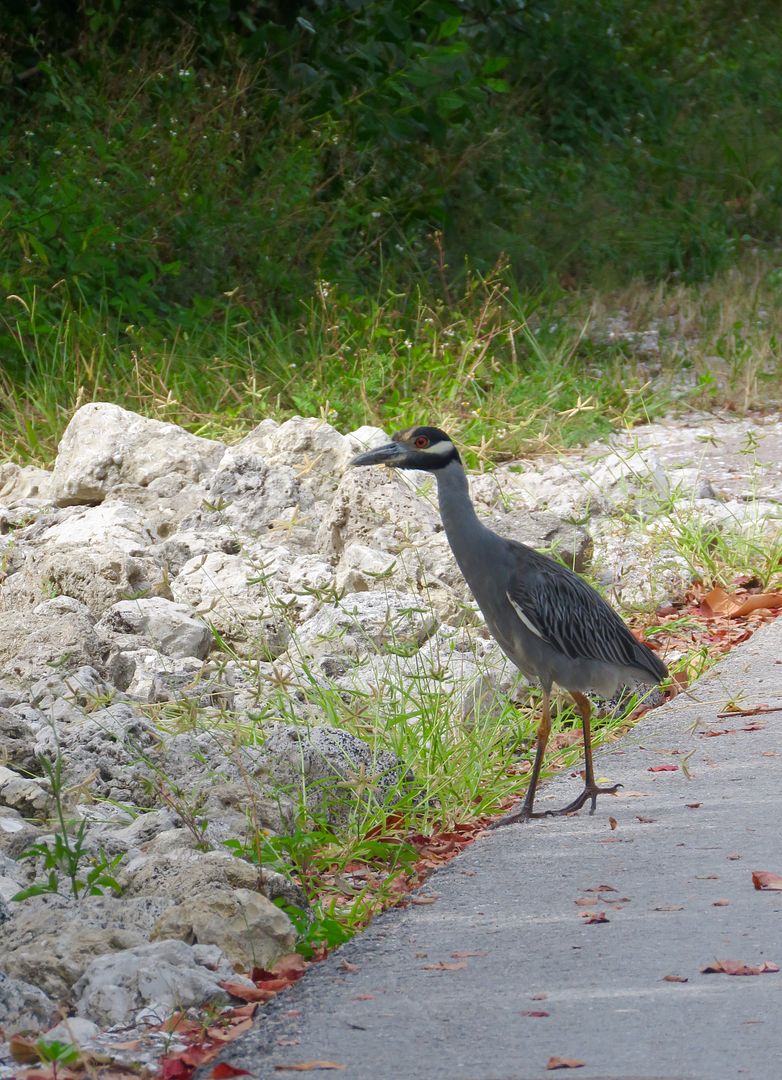

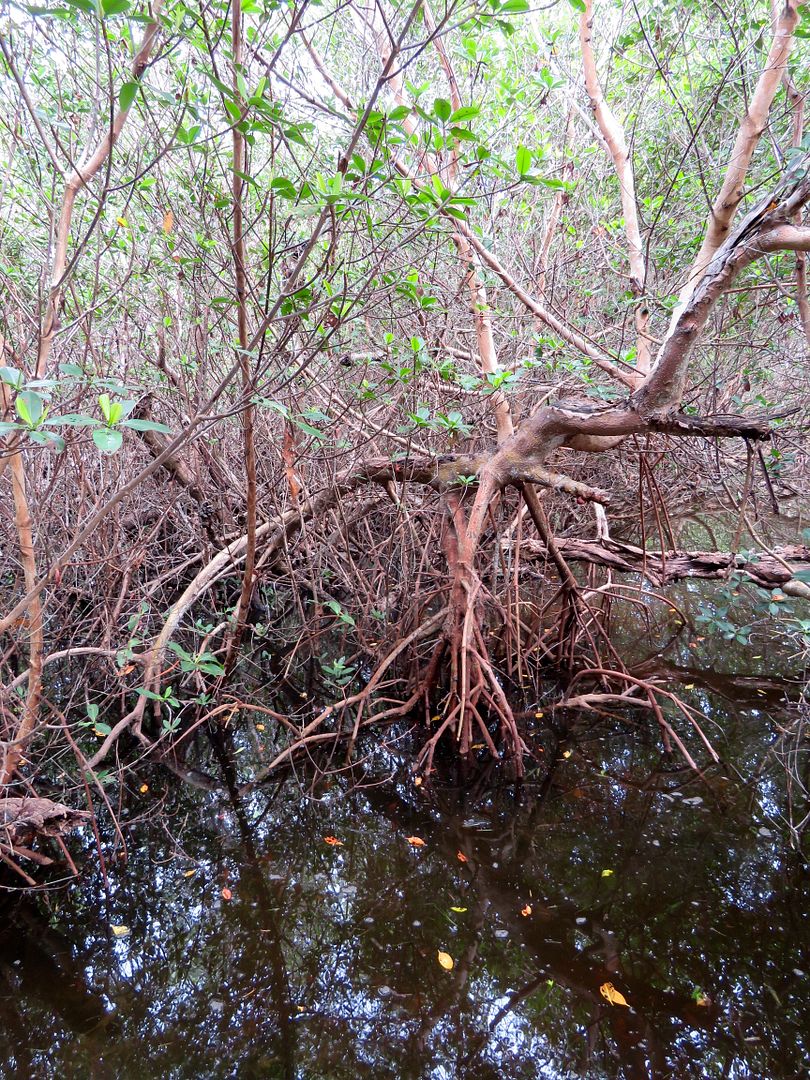
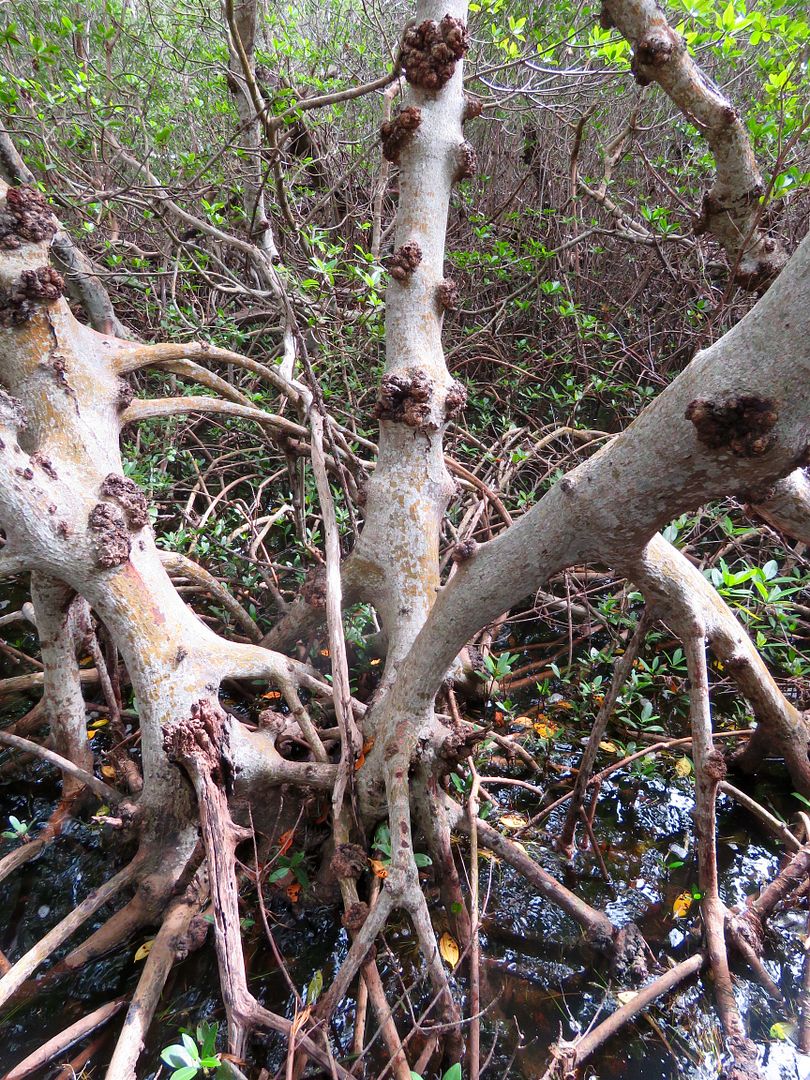
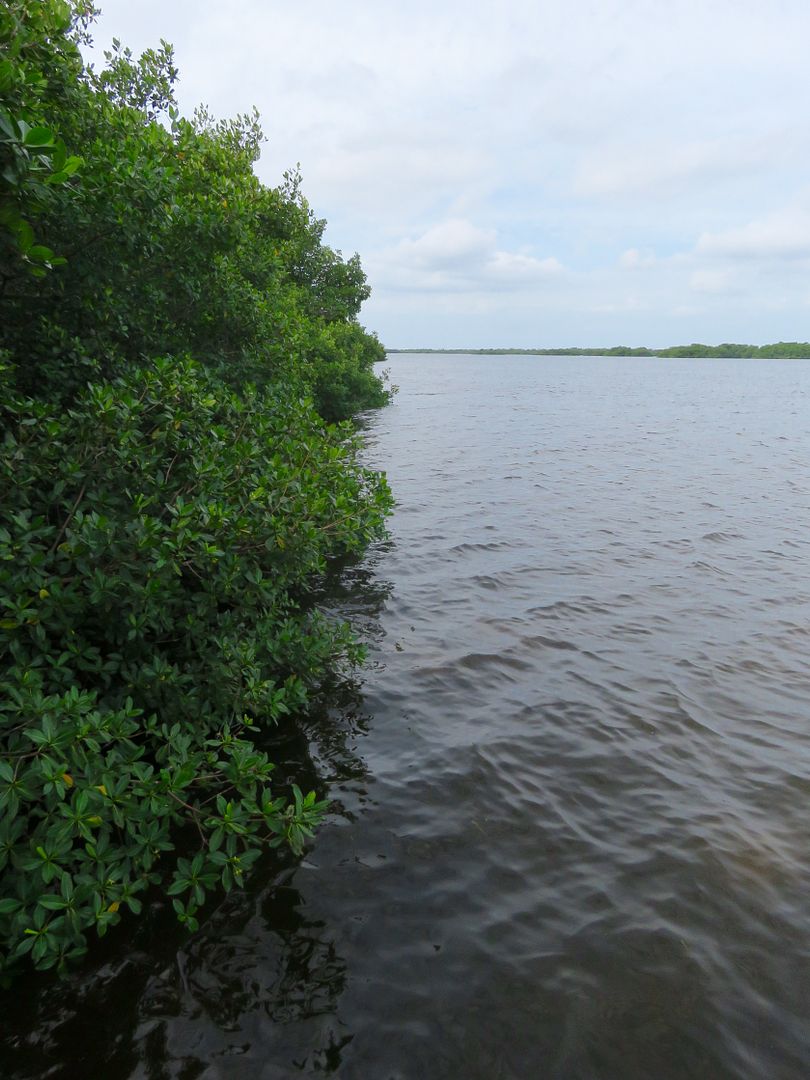



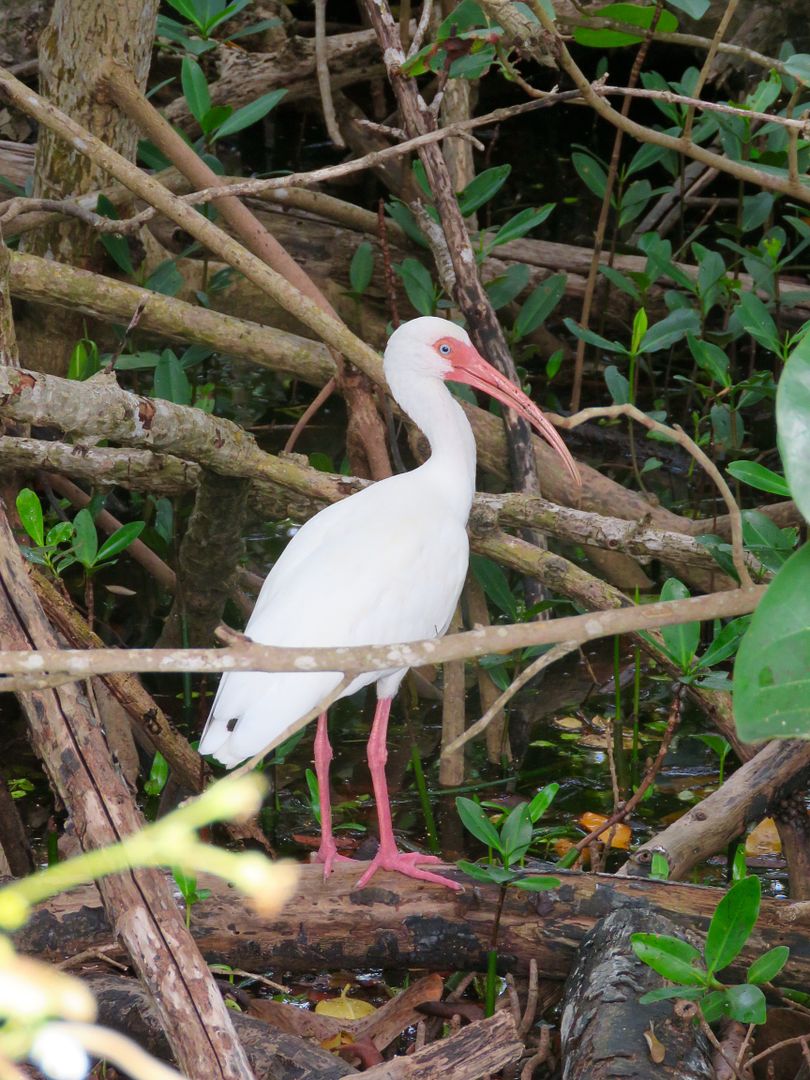

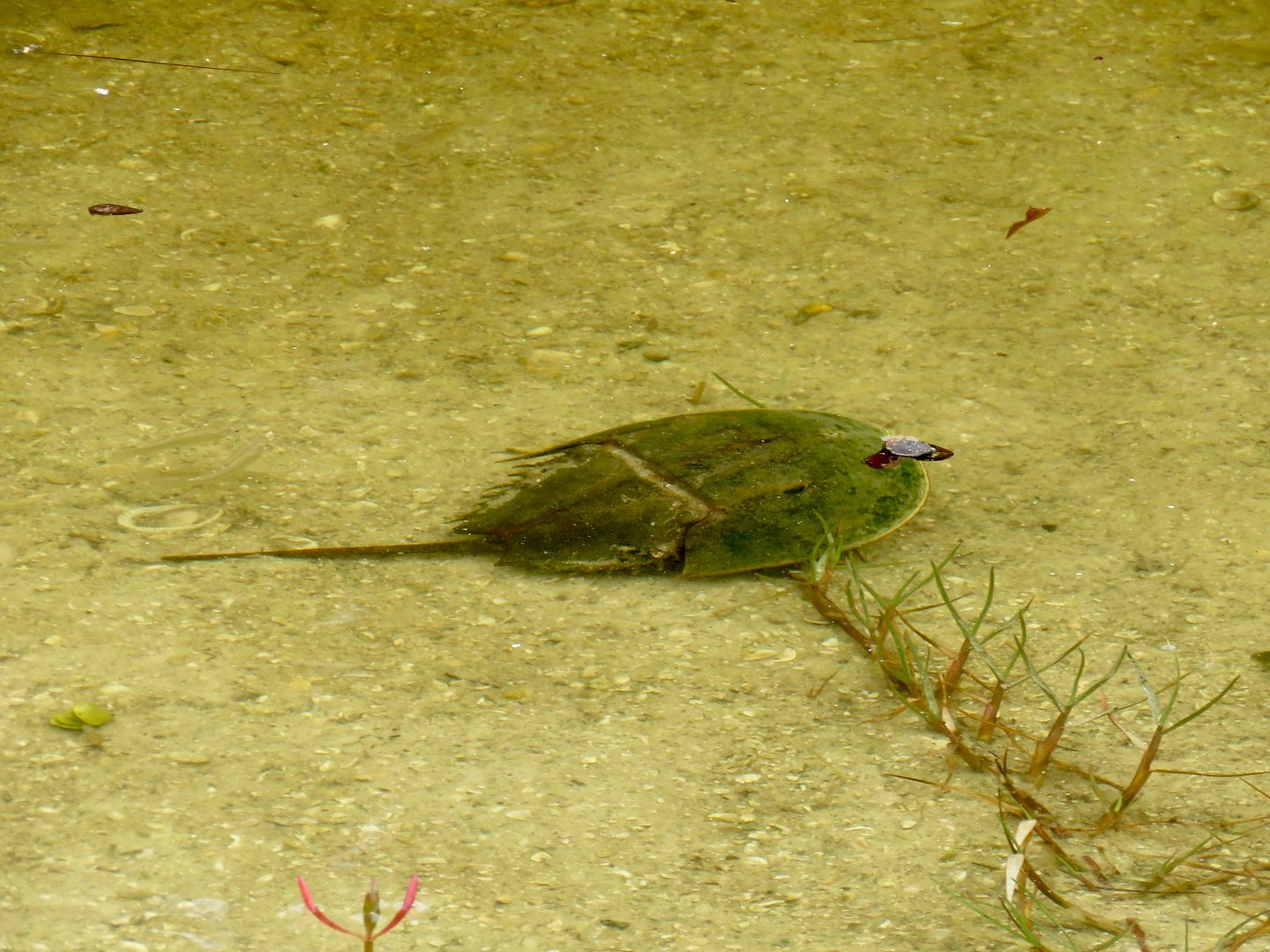
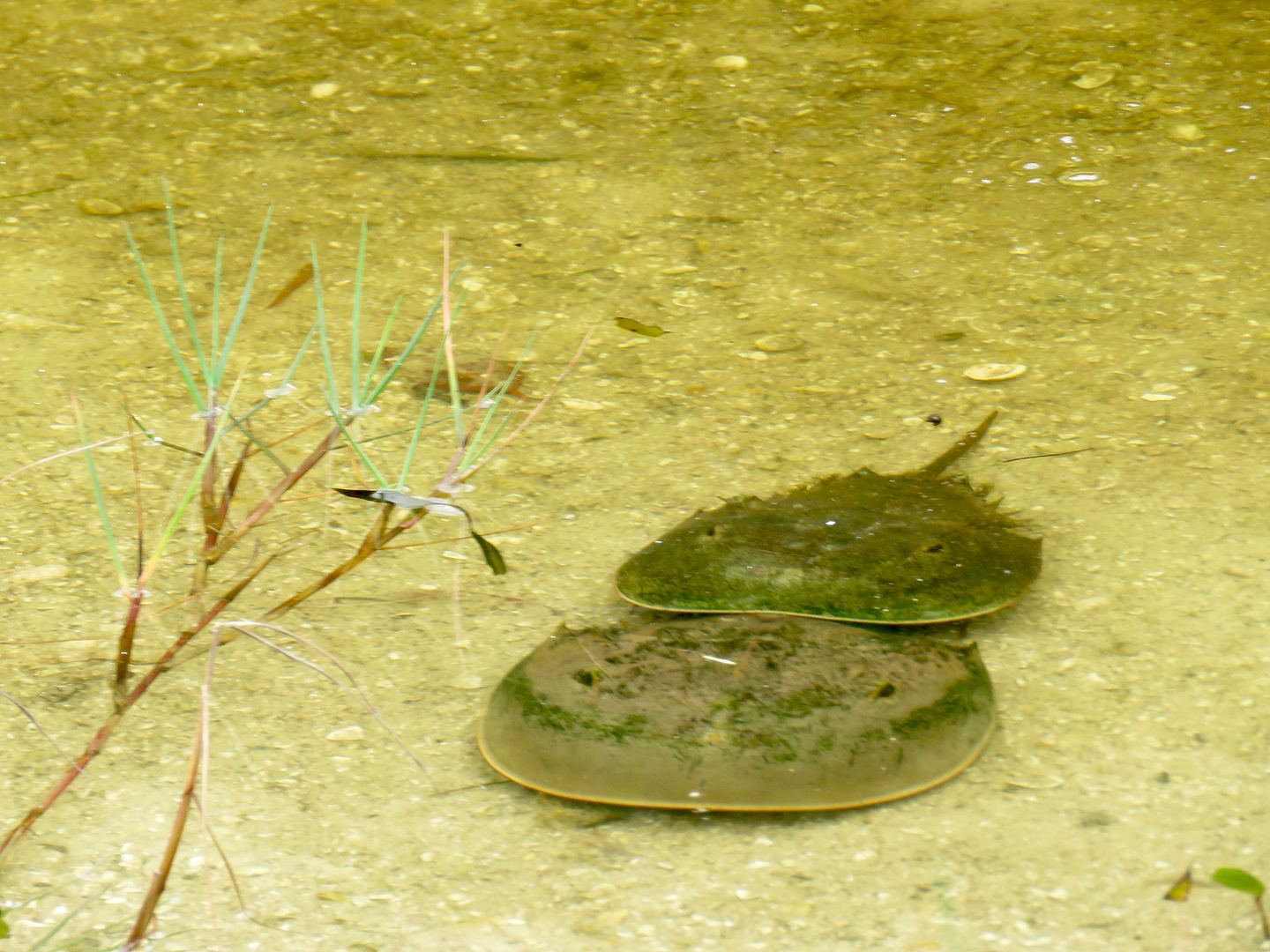

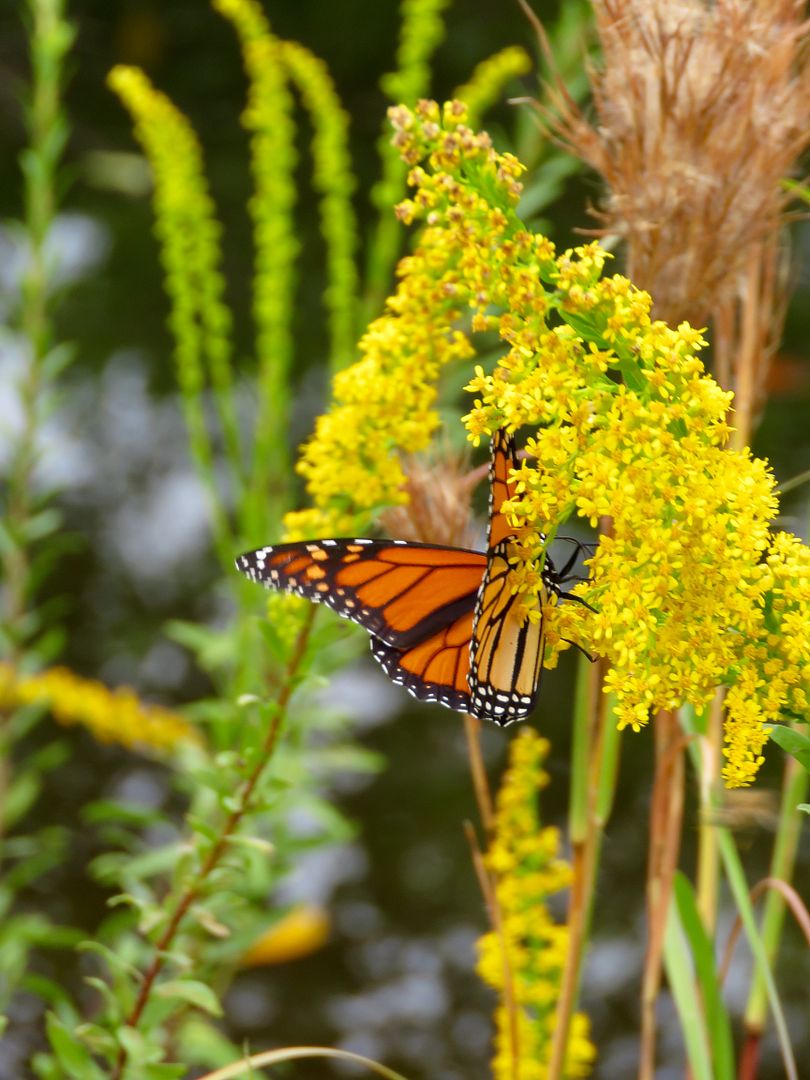

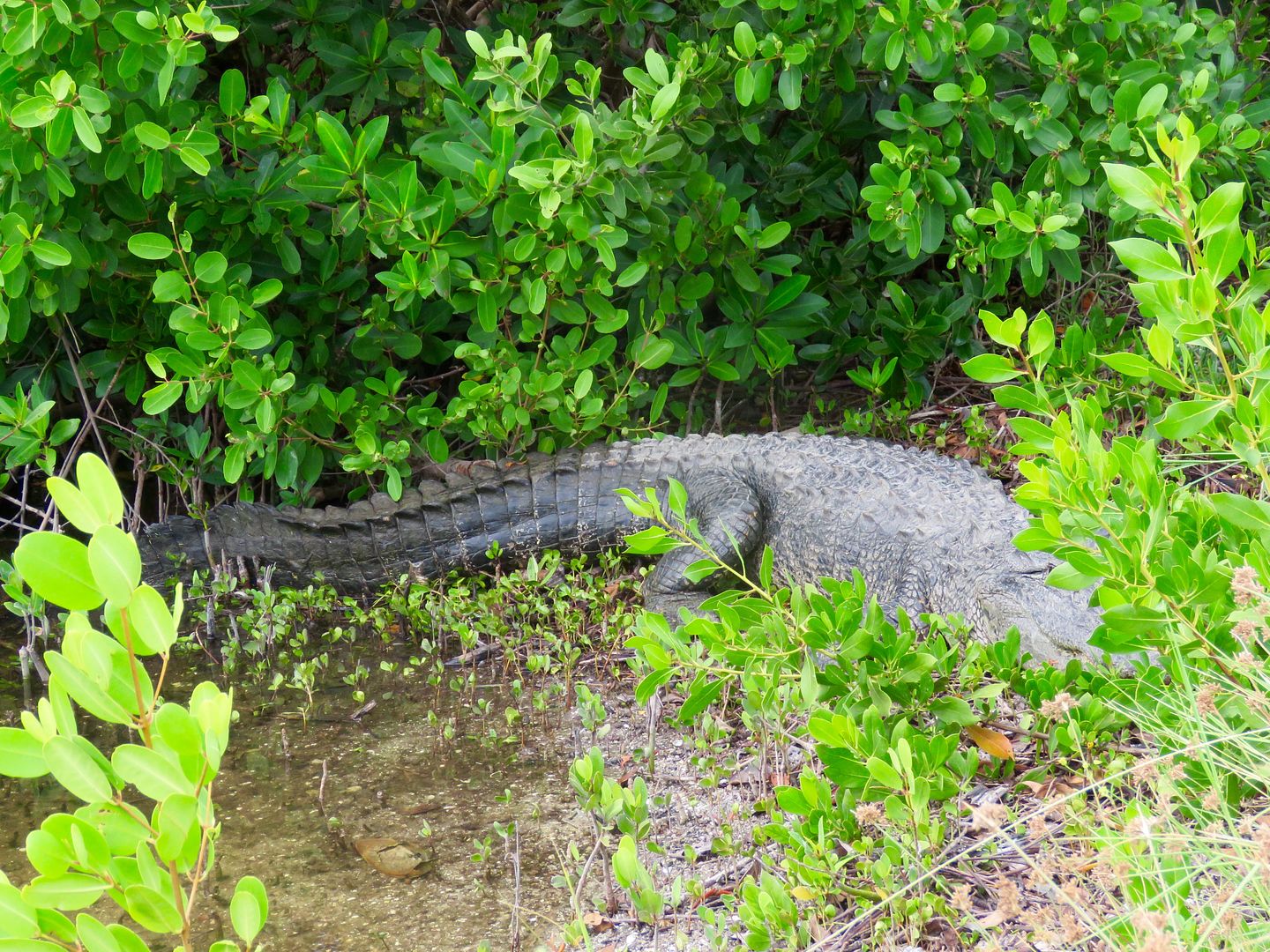
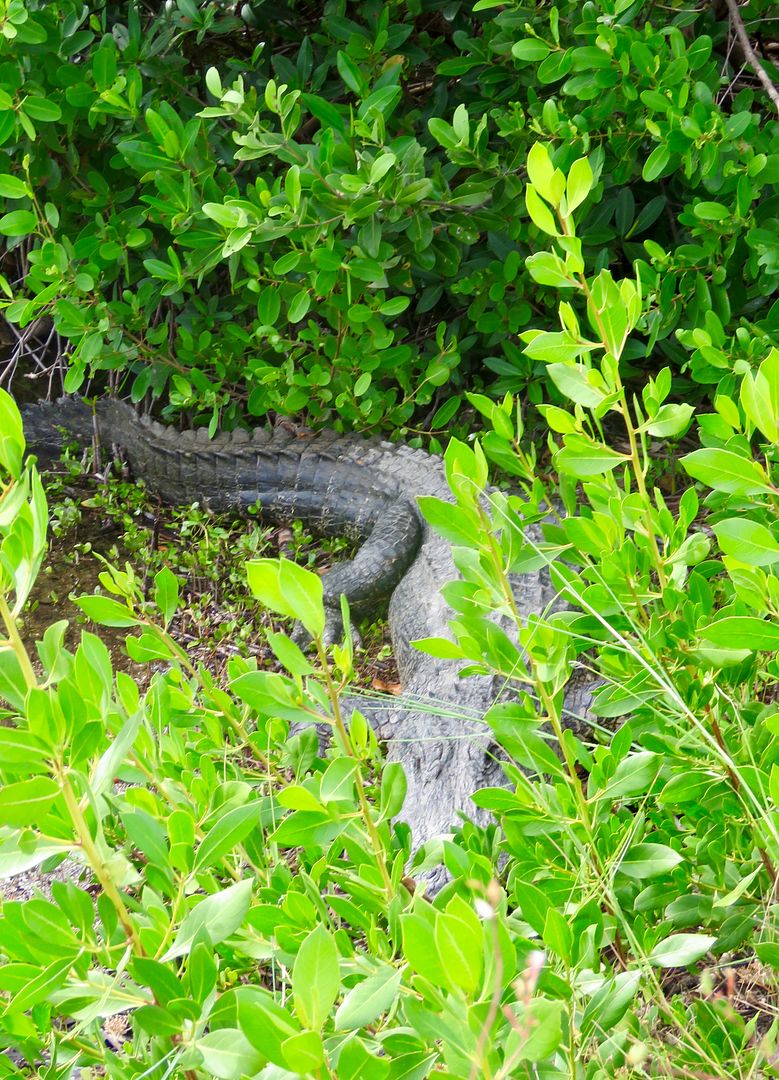

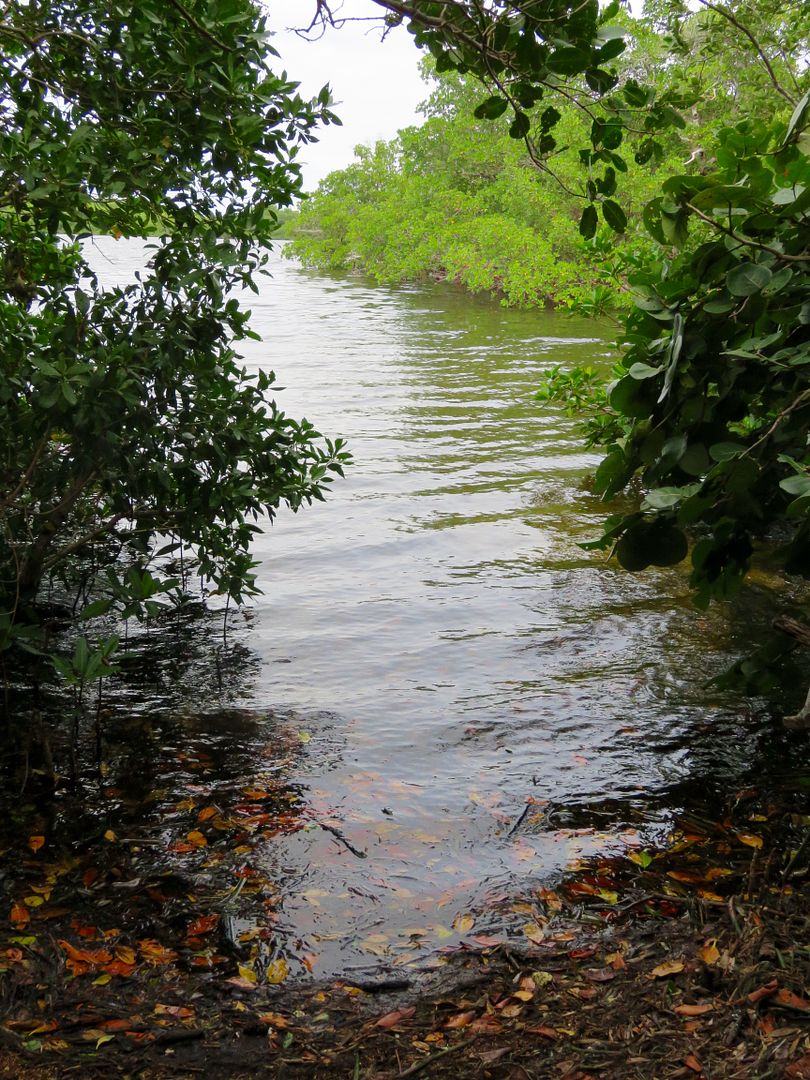
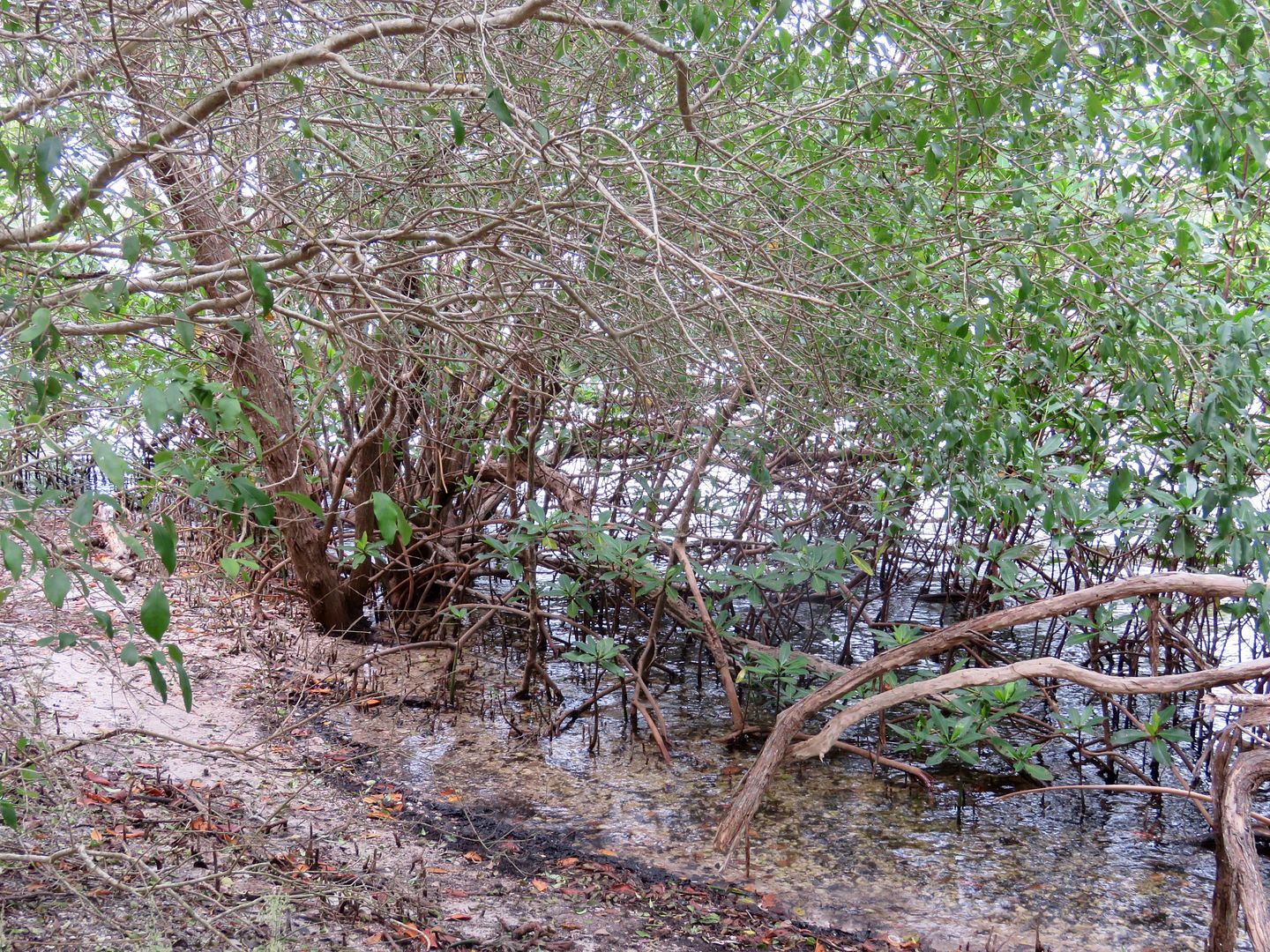
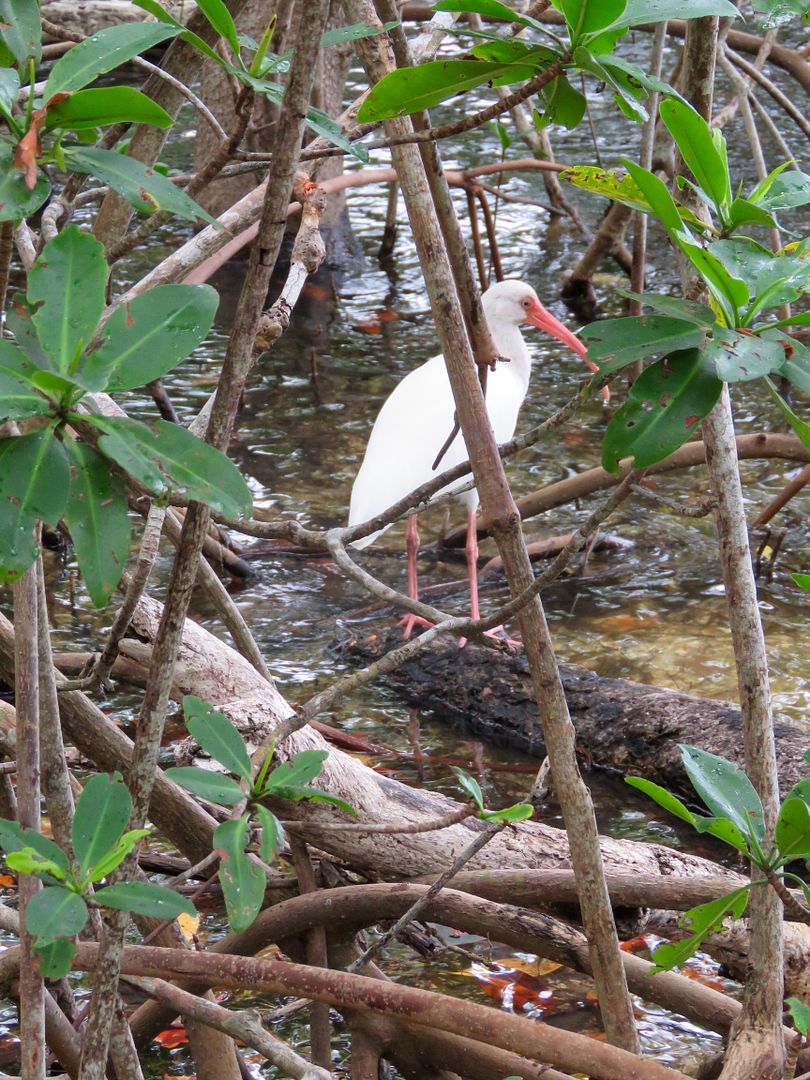


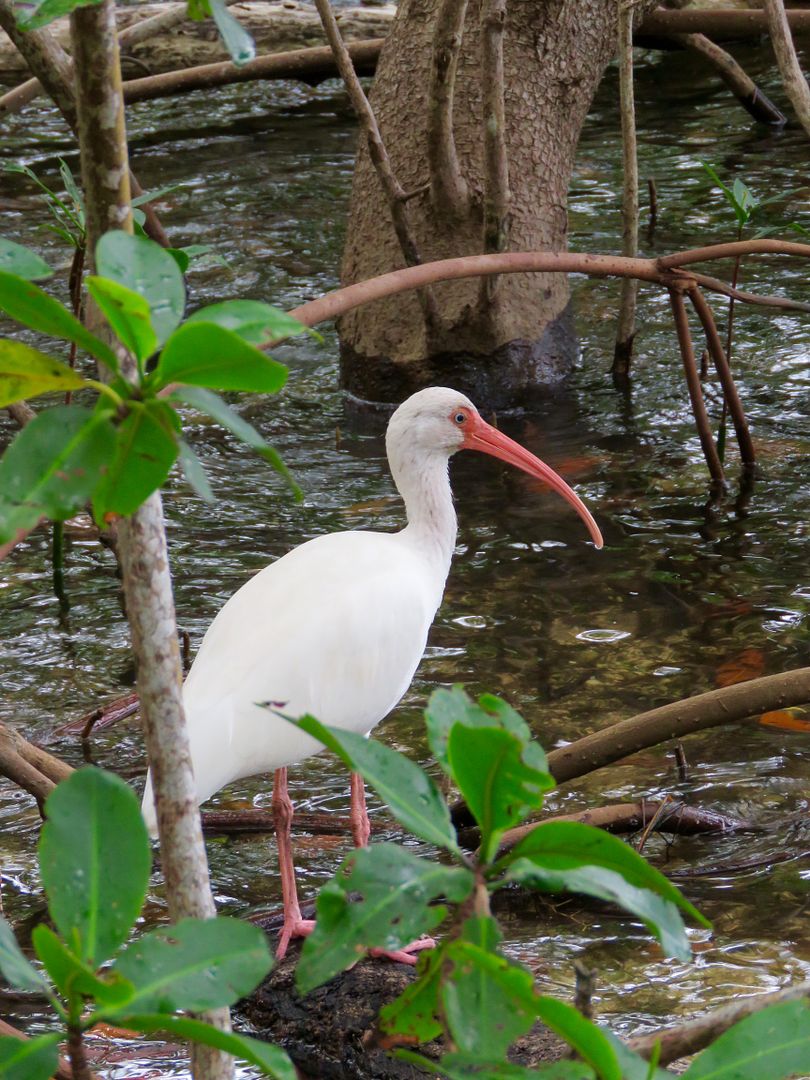
No comments:
Post a Comment